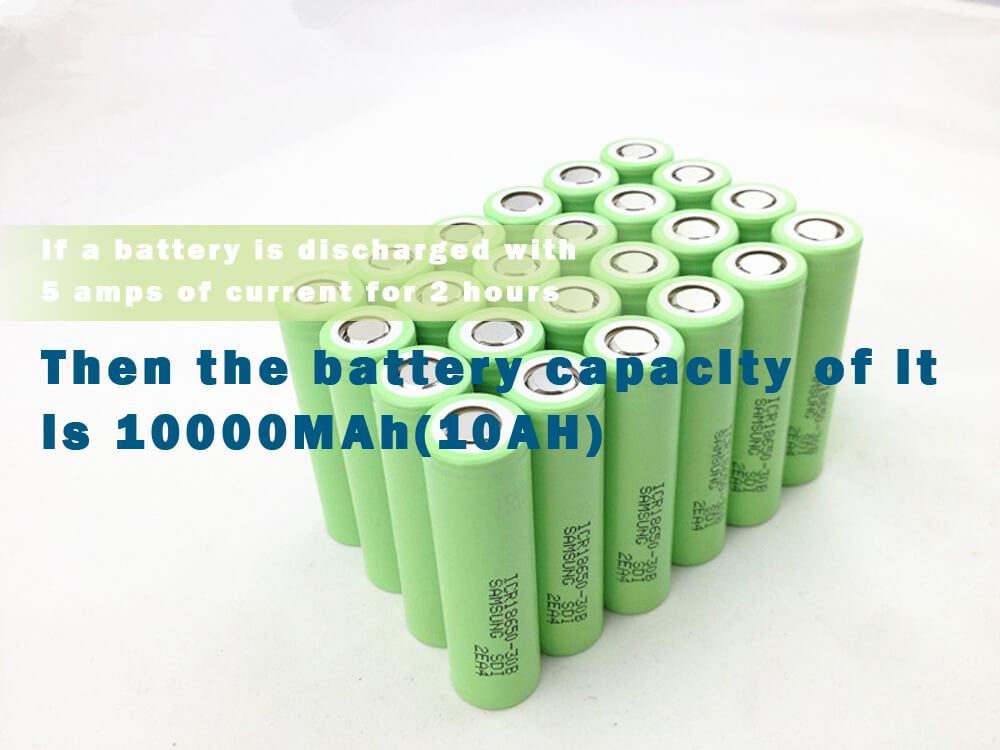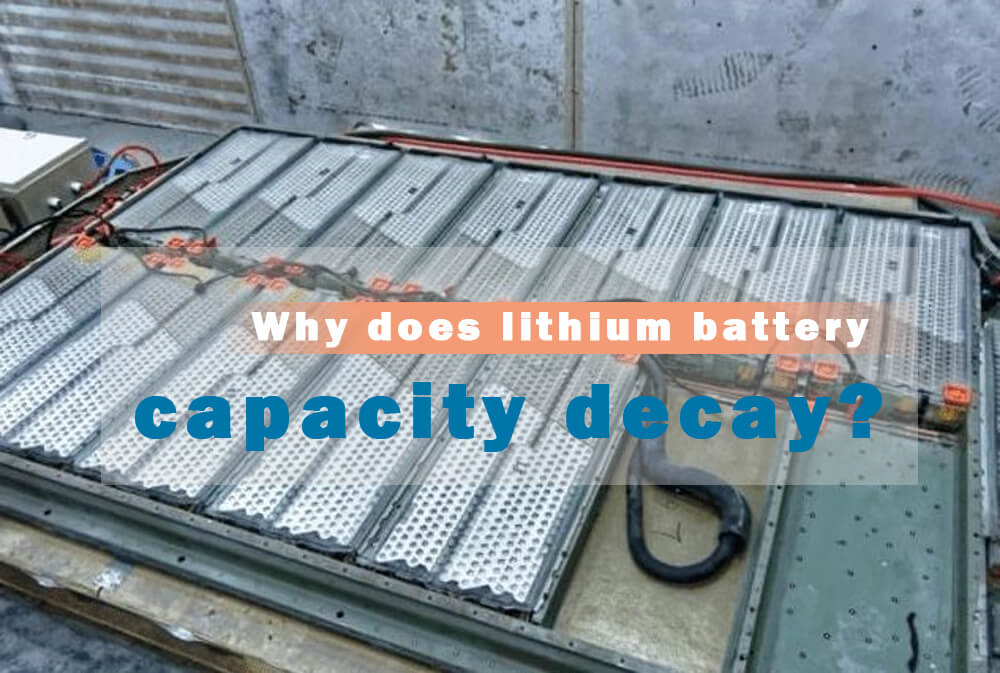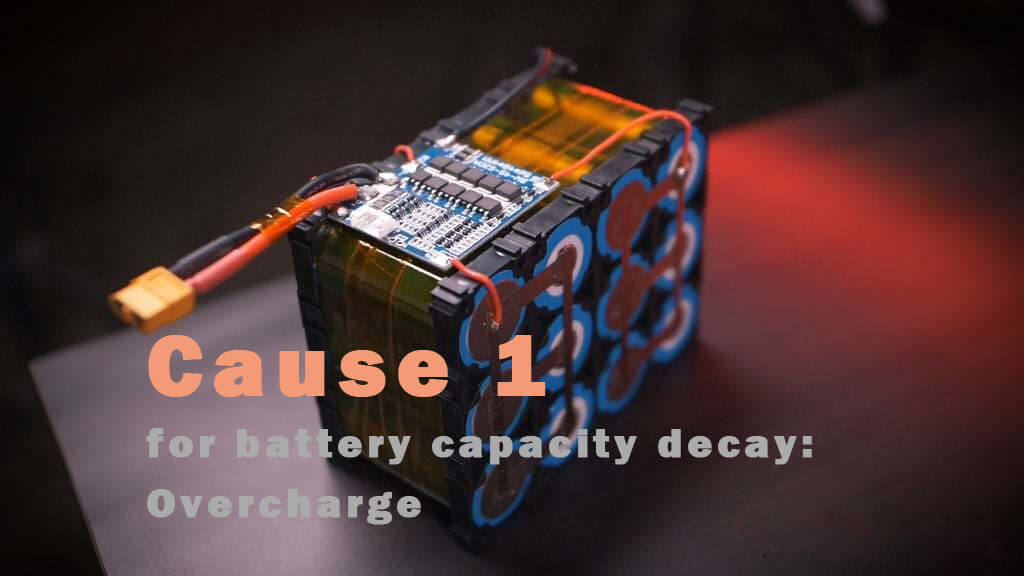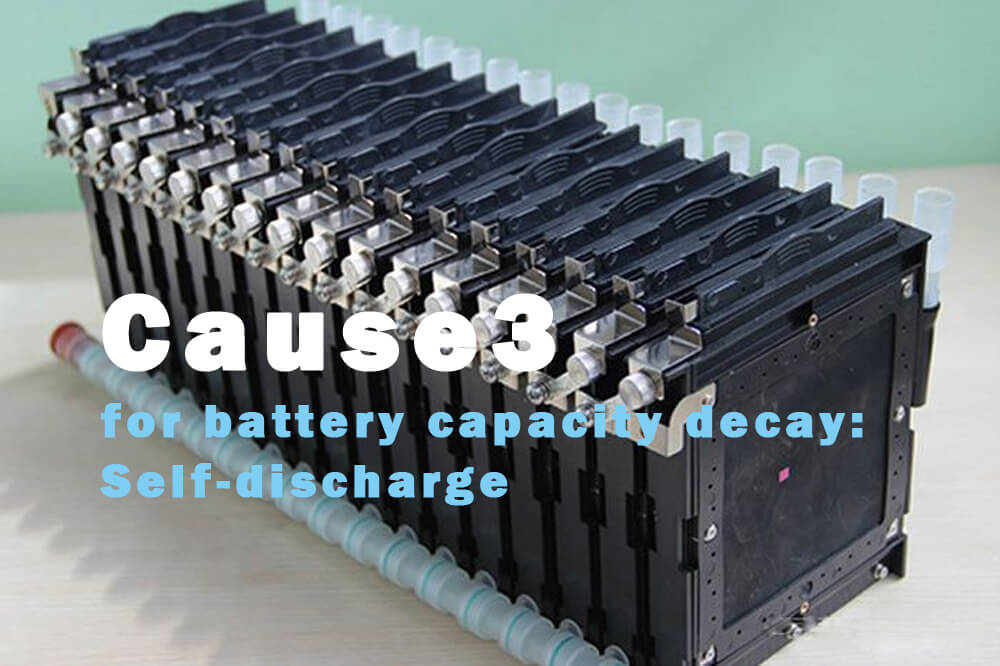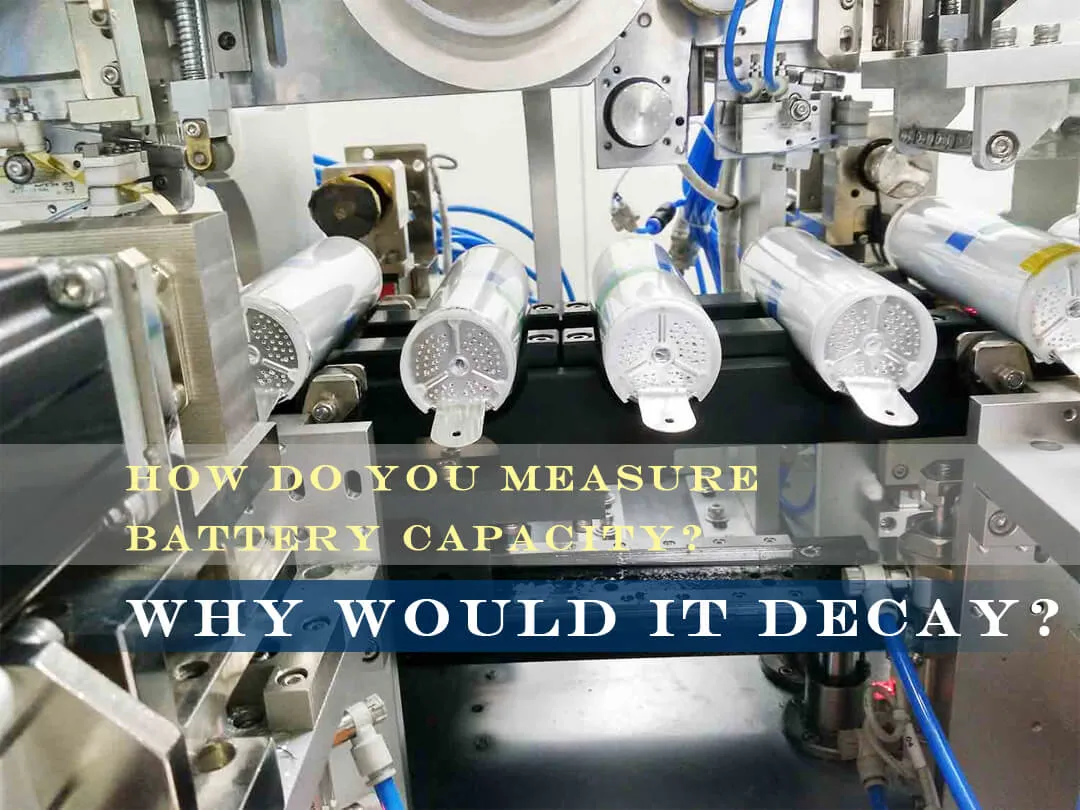Home » Battery Materials » How do you measure battery capacity?why would it decay?
How do you measure battery capacity?why would it decay?
What is battery capacity?
The basic concept of lithium ion battery of battery capacity refers to the amount of electricity that can be obtained from a battery under certain discharge conditions, namely, the current over time (unit: mAh or Ah).
Battery capacity calculator
Calculation method of battery capacity:
Capacity = discharge current (constant current) I x discharge time (hour)T
Reverse:discharge time T = capacity C/discharge current (constant current) I
For example, if a battery is discharged at a constant current of 500MA for two hours, the capacity of the battery is equal to 500MA*2H = 1000MAH=1AH
What does battery capacity 5000mAh mean?
So, according to the above calculation method, what does the common 5000mAh battery capacity mean? A battery can discharge at a constant current of 5000MA for 1 hour, thus it has a capacity of 5000mAh (5 Ah).
5000MA*1H=5000MAh=5AH
If a battery is discharged with 5 amps of current for 2 hours, then the battery capacity of it is 10000MAh(10AH).
5000MA*2H=10000MAh=10AH
The electrode capacity ratio of lithium ion batteries should be balanced
Lithium ion batteries have different embedding energies when the embedding reaction occurs between the two electrodes. In order to obtain the best performance of the battery, the capacity ratio of the two host electrodes should be kept at an equilibrium value.
In lithium-ion batteries, the battery capacity balance is expressed as the mass ratio of the positive electrode to the negative electrode
Generally speaking, the smaller mass ratio leads to the incomplete utilization of the anode material; The larger mass ratio may lead to a safety hazard due to the negative electrode being overcharged. In general, the battery performance is best at the optimal mass ratio.
For an ideal Li-ion battery system, the battery capacity balance does not change during its cycle and the initial capacity is fixed in each cycle, but the actual situation is much more complicated. Any side reaction that can produce or consume lithium ions or electrons may lead to a change in the battery capacity balance.
Once the battery capacity balance changes, the change is irreversible, and can be accumulated through many cycles, and have a serious impact on the performance of the battery. In lithium ion batteries, there are a lot of side reactions, such as electrolyte decomposition, dissolution of active substances and lithium metal deposition, in addition to the oxidation-reduction.
Why does lithium battery capacity decay?
Lithium ion battery is the fastest developing secondary battery after nickel-cadmium and nickel-hydrogen batteries. Its high-energy properties make its future look bright. However, lithium-ion batteries are not perfect, and their biggest problem is the stability of their charge and discharge cycles. Therefore, this part of the paper summarizes and analyzes the possible reasons for the lithium battery capacity decay, including overcharge, electrolyte decomposition and self-discharge.
Cause 1 for battery capacity decay: Overcharge
- Overcharge reaction of graphite anode:
When the battery is overcharged, lithium ions are easily reduced and deposited on the negative electrode surface:
The deposited lithium coated the anode surface and blocked the lithium embedding. Lead to lower discharge efficiency and capacity loss, the reasons are as follows:
① decreased amount of recyclable lithium;
② The deposited lithium metal reacts with solvents or supporting electrolytes to form Li2CO3, LiF or other products;
③Lithium metal is usually formed between the anode and the diaphragm, which may block the pores of the diaphragm and increase the internal resistance of the battery;
④ Due to the nature of lithium is very active, easy to react with electrolyte and consume electrolyte. Thus, the discharge efficiency is reduced and the capacity is lost.
Rapid charging lead to excessive current density and severe polarization of the anode, lithium deposition will be more obvious. This situation tends to occur in the case of excess positive reactive material relative to negative reactive material. However, at high charging rates, lithium metal deposition may occur even if the ratio of positive and negative active substances is normal.
- Positive electrode overcharging reaction
When the ratio of positive active substance to negative active substance is too low, it is easy to overcharge the positive electrode.
The capacity loss caused by positive electrode overcharging is mainly due to the generation of electrochemical inert substances (such as Co3O4, Mn2O3, etc.), which destroys the battery capacity balance between electrodes, and the capacity loss is irreversible.
(1) LiyCoO2
LiyCoO2 – (1 -) y / 3 [Co3O4 + O2 (g)] + yLiCoO2 y < 0.4
At the same time, the oxygen generated by the decomposition of the cathode material in the sealed lithium ion battery will accumulate simultaneously because there is no recombination reaction (such as generating H2O) and the combustible gas generated by the decomposition of the electrolyte, and the consequences will be unimaginable.
(2) lambda – MnO2
The lithium manganese reaction occurs when the lithium manganese oxide is completely delithium: λ -Mno2 →Mn2O3+O2(g)
3.the electrolyte in the overcharge oxidation reaction
When the pressure is higher than 4.5V, the electrolyte oxidizes into insoluble substances (such as Li2Co3) and gases, which block the micropores of the electrode and hinder the migration of lithium ions, resulting in battery capacity decay during the cycle.
Among the commonly used electrolytes, EC/DMC is considered to have the highest oxidation resistance. The electrochemical oxidation process of the solution is generally expressed as: solution → oxidation product (gas, solution and solid matter)+ Ne –
Oxidation of any solvent will increase electrolyte concentration, decrease electrolyte stability, and ultimately affect the battery capacity. Assuming that a small amount of electrolyte is consumed with each charge, more electrolyte will be needed during battery assembly. For a constant container, this means filling a smaller amount of the active substance, resulting in a decrease in the initial battery capacity. In addition, if solid products are produced, passivation film will form on the electrode surface, which will increase the polarization of the battery and reduce the output voltage of the battery.
Cause 2 for battery capacity decay: Electrolyte decomposition (reduction)
I breaks down at the electrode
- Electrolytes decompose on the positive electrode:
Electrolyte consists of solvent and supporting electrolyte. The electrolyte usually forms insoluble products such as Li2Co3 and LiF after the decomposition of the positive electrode, which reduces the battery capacity by blocking the pores of the electrode.
Electrolyte reduction reaction will have adverse effects on the capacity and cycle life of the battery, and the gas generated by the reduction will increase the internal pressure of the battery, resulting in safety problems.
The positive decomposition voltage is usually greater than 4.5V(relative to Li/ Li+), so they do not decompose easily at the positive electrode. In contrast, electrolytes decompose more easily at the negative electrode.
- Electrolytes decompose on the negative electrode:
Electrolyte on graphite and other lithium embedded carbon anode is not high stability, easy to react to produce irreversible capacity. During the initial charge and discharge, the decomposition of the electrolyte will form a passivation film on the electrode surface. The passivation film can separate the electrolyte from the carbon negative electrode to prevent further decomposition of the electrolyte.
Thus maintaining the structural stability of the carbon anode. Under ideal conditions, the reduction of electrolyte is limited to the formation stage of passivation film, and this process does not occur again when the circulation is stabilized.
Formation of passivation film
The reduction of electrolyte salt participates in the formation of passivation film, which is beneficial to the stabilization of passivation film, but
(1) The insoluble substance produced by the reduction has a negative effect on the solvent reduction products;
(2) The concentration of electrolyte decreases during electrolyte salt reduction, resulting in the loss of battery capacity (LiF, LIXPF5-X, PF3O and PF3 are generated by LiPF6 reduction);
(3) The formation of passivation film consumes lithium ions, which will lead to capacity imbalance between the poles and reduce the entire battery capacity ratio.
By comparing and analyzing the AC impedance spectra of electrode materials before and after the cycle, researcher found that with the increase of cycle times, the resistance of the surface passivation layer increased and the interface capacitance decreased. It reflects that the thickness of passivation layer increases with the number of cycles.
The dissolution of manganese and the decomposition of electrolyte lead to the formation of passivation film, and high temperature conditions are more favorable to these reactions. As a result, the contact resistance between active particles and the Li+ migration resistance will increase, resulting in the increase of polarization, incomplete charge and discharge, and reduced battery capacity.
II Reduction mechanism of electrolyte
The electrolyte often contains oxygen, water, carbon dioxide and other impurities, and REDOX reactions occur in the charging and discharging process of the battery.
The reduction mechanism of electrolyte includes solvent reduction, electrolyte reduction and impurity reduction:
- Reduction of solvent
The reduction of PC and EC includes one-electron reaction and two-electron reaction processes, in which Li2CO3 is formed. The electrolyte composed of diethyl carbonate (DEC) and dimethyl carbonate (DMC) will undergo exchange reaction in the battery to form methyl ethyl carbonate (EMC), which has a certain impact on battery capacity loss.
- Reduction of electrolytes
Electrolyte reduction reaction is usually considered to be involved in the formation of carbon electrode surface film, so its type and concentration will affect the performance of carbon electrode. In some cases, the reduction of the electrolyte contributes to the stabilization of the carbon surface, resulting in the formation of the desired passivation layer.
It is generally believed that the supporting electrolyte is easier to reduce than the solvent, and the reduction products are included in the negative deposition film and affect the decay of battery capacity .
- Impurity reduction
(1) Excessive water content in the electrolyte will generate LiOH(S) and Li2O deposition layers, which is not conducive to lithium ion embedding and cause irreversible capacity loss:
H2O + 1/2 + e – OH – h2
OH – + Li + – > LiOH (s)
LiOH + Li++ e – – > Li2O + 1/2 h2 (s)
(2) CO2 in the solvent can be reduced to produce CO and LiCO3(s) on the negative electrode:
Co2 + 2 e – li + 2 + 2 – > Li2CO3 + CO
CO will increase the internal pressure of the battery, while Li2CO3 (S) will increase the internal resistance of the battery and affect the performance of the battery.
(3) The presence of oxygen in the solvent will also form Li2O
O2 + 2 e – 1/2 + 2 li + – > Li2O
Because the potential difference between lithium metal and fully embedded carbon is small, the reduction of the electrolyte on carbon is similar to that on lithium.
Cause3 for battery capacity decay: Self-discharge
Self-discharge refers to the natural loss of battery capacity when the battery is not in use. There are two cases of battery capacity loss caused by self-discharge of lithium ion battery:
One is reversible capacity loss;
The other is the loss of irreversible capacity.
Irreversible capacity loss refers to loss of battery capacity to recover when charging, the irreversible capacity loss, by contrast, is negative in the charging status may be related to electrolyte in micro batteries, lithium ion embedded and embedded, embedded is negative and built-in lithium ion off only related to the electrolyte of lithium ion, so there is no balance is negative capacity, this section battery capacity loss cannot recover when charging.
Similarly, the negative active substance may interact with the electrolyte microbattery to produce self-discharge resulting in irreversible capacity loss, and electrolyte (e.g. LiPF6) is reduced on conductive material.
Factors affecting self-discharge: cathode material production technology, battery production technology, the nature of electrolyte, temperature, time.
The self-discharge rate is mainly controlled by the oxidation rate of the solvent, so the stability of the solvent affects the storage life of the battery.
If the negative electrode is fully charged and the positive electrode discharges itself, the capacity balance in the battery is disturbed, resulting in permanent battery capacity loss.
For a long time or often self-discharge, lithium may be deposited on carbon, increasing the capacity imbalance between the poles.
Researcher compared the self-discharge rates of three main metal oxide positive electrodes in different electrolytes and found that the self-discharge rates varied with different electrolytes.
It is pointed out that the oxidation products of self-discharge clog the micropores on the electrode material, which makes it difficult to insert and release lithium and increase the internal resistance and reduce the discharge efficiency, thus leading to irreversible battery capacity loss.



